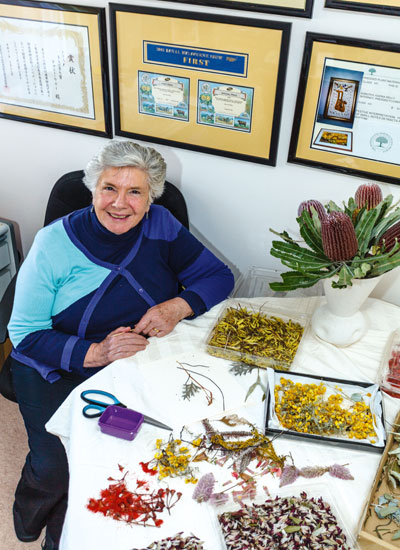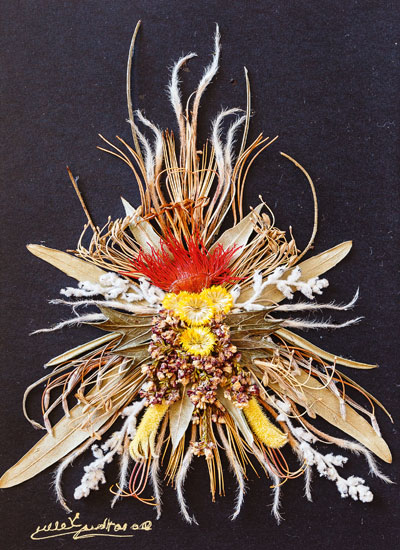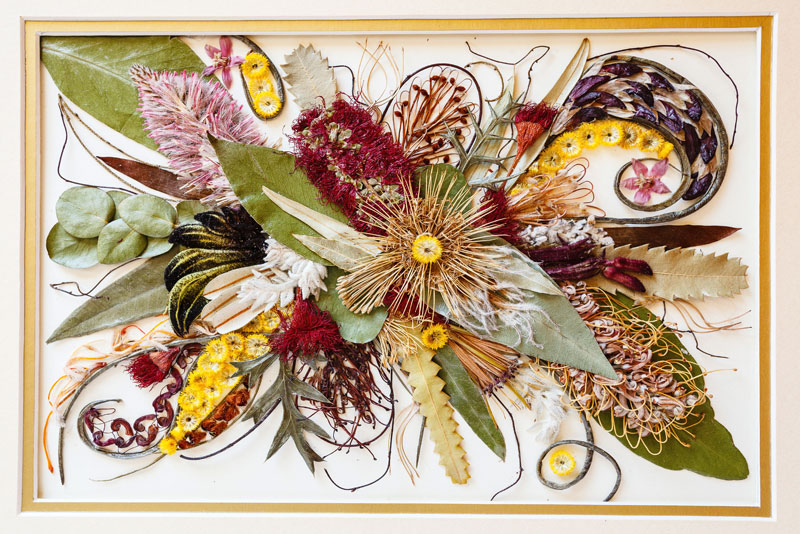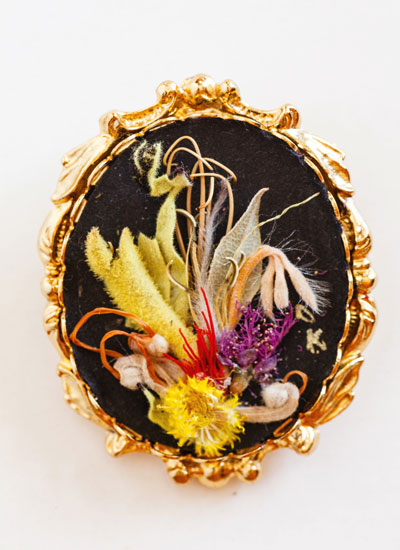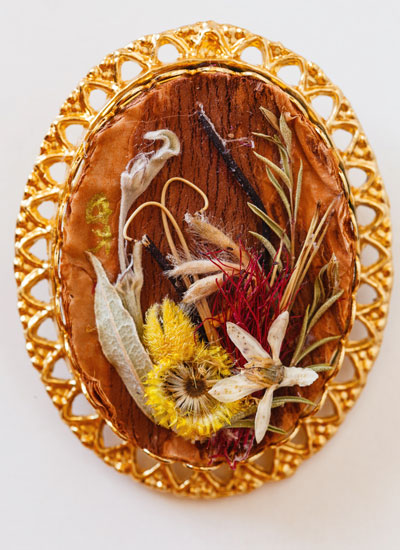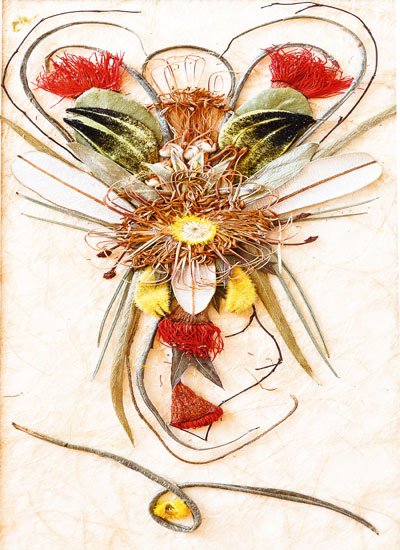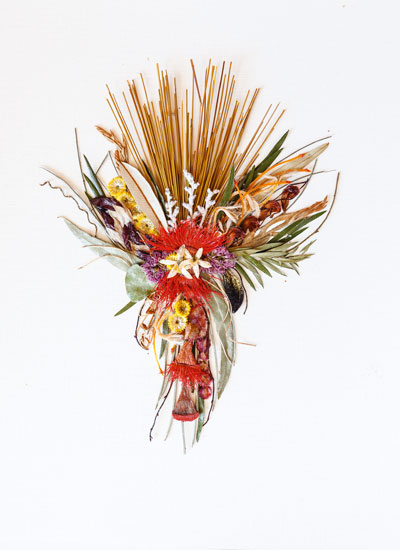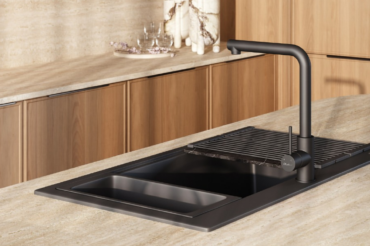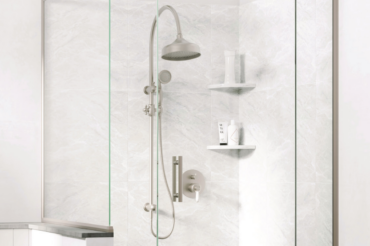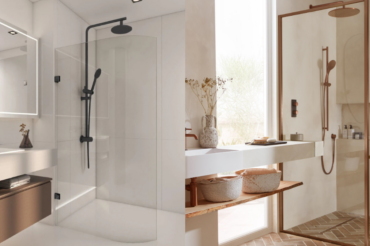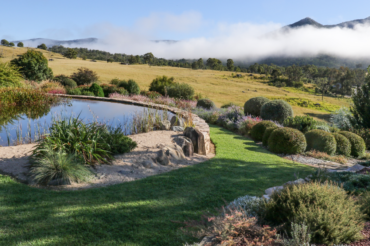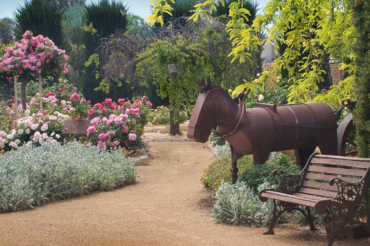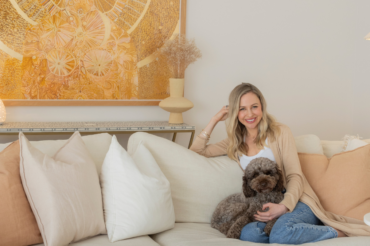
The kitchen tabletop in Dorothy Kelly’s Emu Plains home on the outskirts of Sydney is awash with a subtle palette of kangaroo paw, mullu mulla, bottlebrush, yellow button flowers, smokebush, grevillea, banksia and gum leaves. In her workroom and garage, there are stores of containers filled with similar treats that she has hunted and gathered over the course of the year. Lifting a lid is as exquisite as opening a chocolate box, the scent equally as evocative and I’m transported into the Australian bush with one sniff.
“I started collecting native flowers in 1985 after returning from our daughter’s wedding in England,” she explains. “I’ve never studied floristry but I arranged the wedding bouquets, pew markers and guest baskets and wanted to try pressing flowers to create pictures.” It was a realistic ambition given horticulture was in her blood. In their heyday Dorothy’s parents grew 500 dahlia bulbs each year, maintained a hothouse of 2000 cacti in the backyard and judged at local flower shows in the Goulburn area of New South Wales. As the eldest of six children, there was an expectation she would help her parents at horticultural shows and she quickly discovered a talent for reproducing many of the floral entries.
Back on Australian shores and living in the Blue Mountains, Dorothy pursued her promise and accessed friends’ and neighbours’ properties to forage for native flowers, leaves and bark. As luck would have it, Australian natives are hardy, stand up to being pressed, and survive in storage incredibly well. So each year for the past 30, Dorothy has picked enough natives to last until the next flowering season, so there’s a more than ample supply to play with. Using miniature scissors, textured paper, craft clue, a wooden skewer and her ideas, she has become an expert in oshibana – the Japanese art of pressing and arranging flowers, a practice dating back to the 16th century.
There is no preliminary drawing, no Computer Aided Design, instead she puts her heart and soul spontaneously on paper. “I might start by picking up one leaf and I’ll then conceive a design based on resources,” she says. “A picture appears in my mind. I’ll observe natural curvatures, consider shape and flow, and I’ll marvel at the point where one colour stops and another starts, like the feathers on a lorikeet. Nature and its beauty are my inspiration. I have to break native flowers down as I only use particles, which means I appreciate all the components.”
For more information visit ageniascrafts.com.
This story was originally published in the August 2015 issue of Australian Country. Keep up to date and subscribe to the magazine here.
Read more creative corner stories here.
Words Meryl Hancock
Photography Ken Brass

